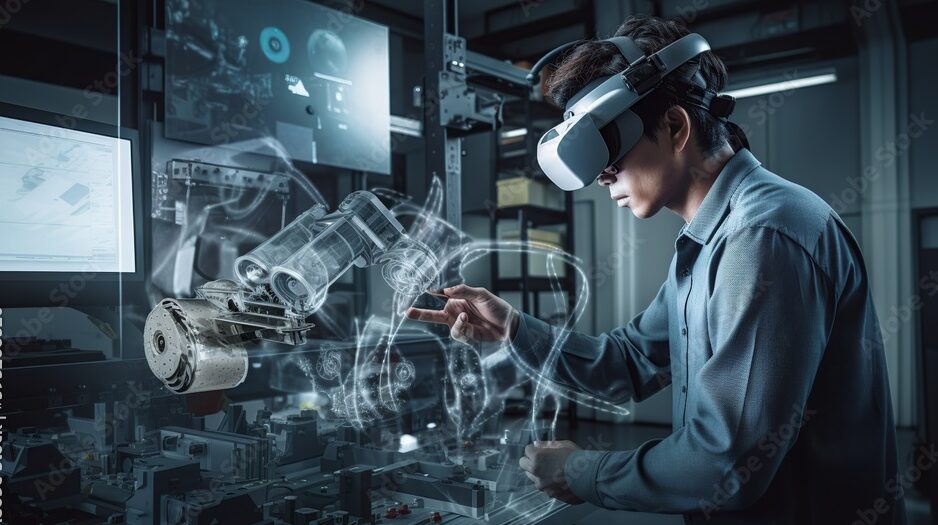The convergence of Augmented Reality (AR) and Artificial Intelligence (AI) is reshaping the realm of robotics. This fusion is not just a technological innovation; it’s a revolution with far-reaching implications for various industries. In this blog post, we’ll delve into how AR and AI are transforming robotics and explore the exciting possibilities that lie ahead.
AR’s Role in Robotics
Augmented Reality, the technology that overlays digital information on the real world, is playing a significant role in robotics. Here are two key ways AR is contributing:
1. Visualization and Teleoperation
AR empowers robot operators with real-time visualizations of the robot’s surroundings. This facilitates more precise control, especially in complex or hazardous environments. For example, in manufacturing, an operator wearing AR glasses can see through the robot’s eyes and make real-time adjustments to its movements.
2. Enhanced Perception
AR enhances a robot’s perception by overlaying valuable information onto its surroundings. This information can include object identification, critical feature highlighting, and contextual data. In the field of healthcare, surgeons use AR to visualize a patient’s internal anatomy during surgery, enhancing precision and reducing the risk of errors.

AI’s Impact on Robotics
Artificial Intelligence, particularly machine learning and computer vision, is a driving force behind robotics’ evolution. AI equips robots with the ability to adapt, learn, and make decisions, including:
1. Autonomous Navigation
AI enables robots to navigate autonomously through dynamic environments. They can analyze sensor data, make real-time decisions, and adapt to changing conditions. This autonomy is invaluable in applications like autonomous vehicles and delivery robots.
2. Object Recognition and Manipulation
AI empowers robots to recognize and manipulate objects with dexterity. This capability is crucial in industries such as logistics and manufacturing, where robots need to handle a wide range of items efficiently.

The Synergy of AR and AI
The true magic happens when AR and AI synergize within robotics. Here’s how:
1. Enhanced Situational Awareness
By combining AI’s object recognition and scene understanding with AR’s real-time visualization, robots gain a deeper understanding of their environment. They can identify objects, detect obstacles, and even predict potential issues, making them safer and more effective.
2. Human-Robot Collaboration
AR facilitates seamless human-robot collaboration. Through AR interfaces, humans and robots can work together more intuitively. For example, an AR headset worn by a technician can provide real-time instructions to a robot, guiding it through complex maintenance procedures.
3. Training and Education
AR-powered simulations offer valuable training and educational experiences. Individuals can immerse themselves in learning by interacting with AI-driven robots in controlled environments. This is especially advantageous in fields like medicine and manufacturing.
4. Remote Assistance
AR can connect global experts with on-site robot operators. AI-driven analytics help diagnose issues, and AR provides real-time guidance for repairs or maintenance, reducing downtime.

Challenges and Future Prospects
While the synergy between AR and AI in robotics is full of promise, challenges like privacy concerns, data security, and the need for robust AI algorithms in diverse real-world scenarios must be addressed.
As we look to the future, AR and AI in robotics promise unparalleled possibilities. We can anticipate robots that are not only safer and smarter but also more adaptable and versatile. Industries across the spectrum, from healthcare and manufacturing to education and entertainment, are set to benefit, ushering in a more interconnected and efficient world.
Final Thoughts
The fusion of Augmented Reality and Artificial Intelligence in robotics is not merely an evolution; it’s a revolution. It enhances robot perception, improves human-robot collaboration, and unlocks novel opportunities across industries. As these technologies advance, robots will become integral to our lives, transforming the way we work, learn, and engage with the world. The synergy of AR and AI in robotics is shaping a remarkable future.
